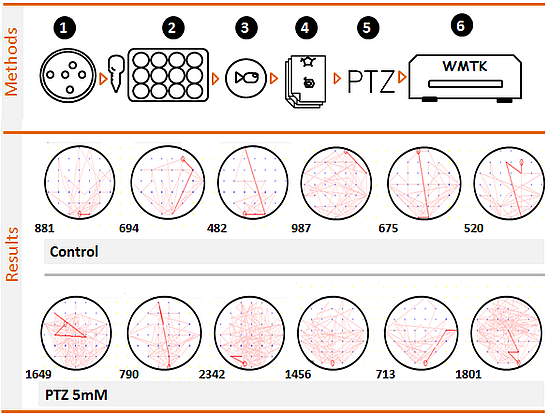

Zebrafish have been widely used as a model system for studying developmental processes, but in the last decade, they have also emerged as a valuable system for modeling human disease. The development and function of zebrafish organs are strikingly similar to those of humans, and the ease of creating mutant or transgenic fish has facilitated the generation of disease models.
Exposure of zebrafish larvae to a common convulsant agent (pentylenetetrazole, PTZ) induced a stereotyped and concentration-dependent sequence of behavioral changes culminating in clonus-like convulsions. Tracking of swimming behavior is easy to implement using our WMicrotracker system. Below you'll find a procedure example.

In this experiment we can observe the effect of PTZ on 5dpf zebrafish larvae behavior after 15 minutes of drug exposure. The plot shows the tracking of swimming behavior and the distance (in mm) for each fish cultured in a 6-well microplate. An increase in the total traveled distance is observed when fishes are treated.